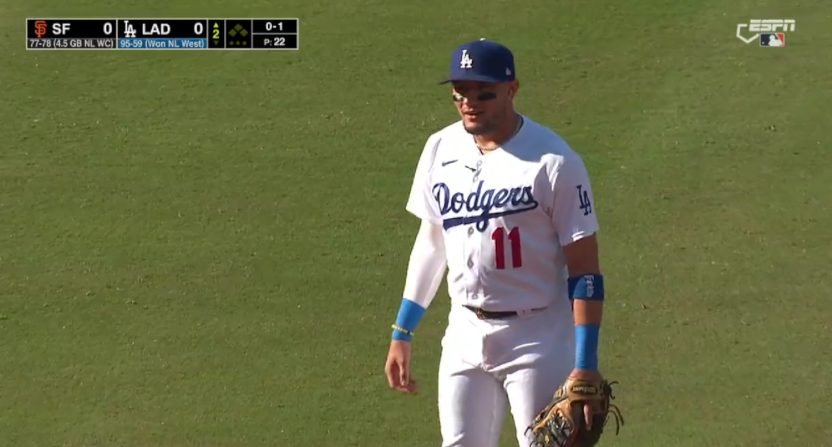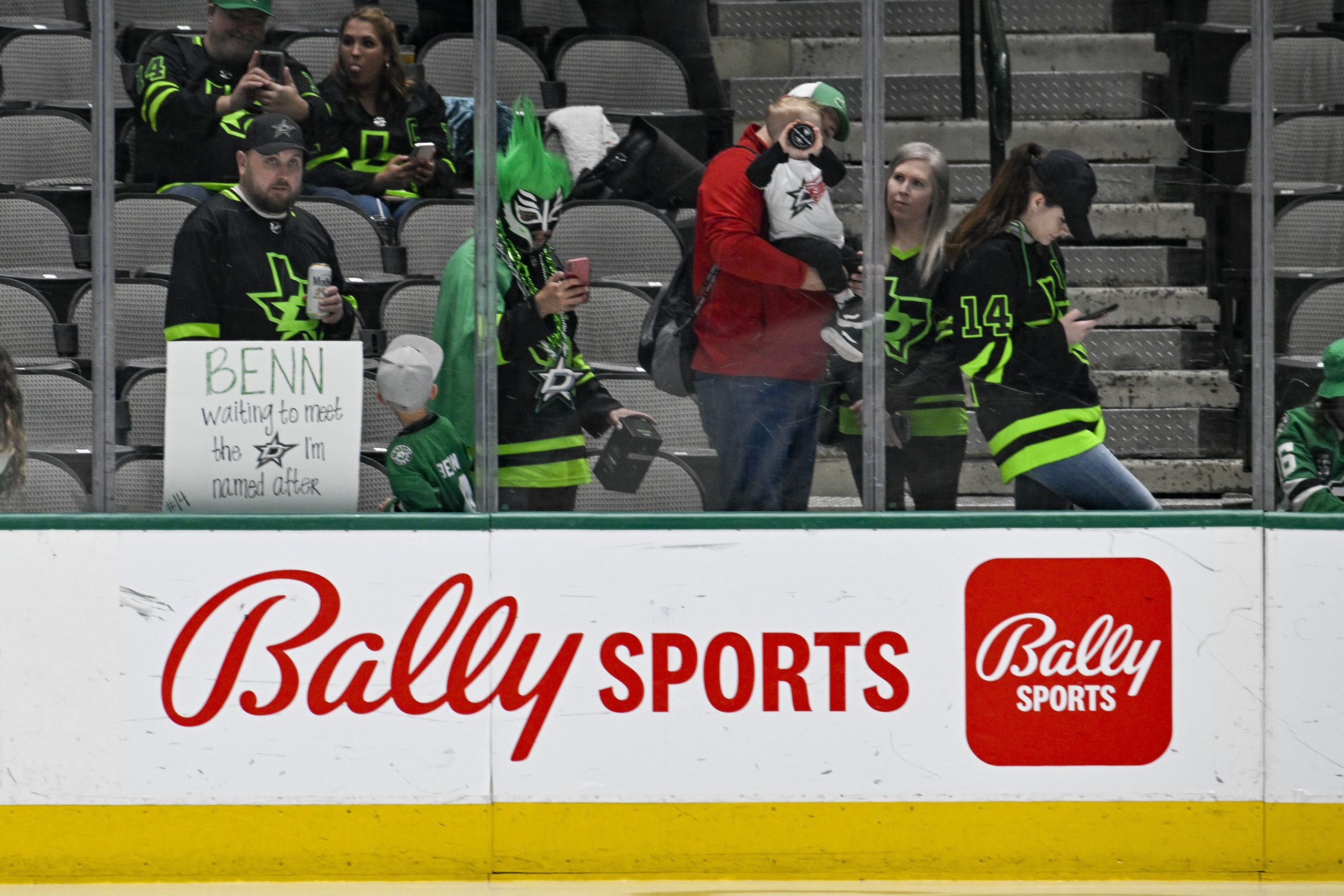Pro athletes wearing microphones for after-the-fact specials has been long-established. That history dates back at least to NFL Films’ first-ever mic’d up player, Pittsburgh Steelers’ linebacker Bill Saul in 1967, and it’s seen countless players mic’d up since then across sports. But the last decade-plus has seen more athletes, coaches, and officials wear mics for live broadcasts, and that sometimes produces notable results.
Sometimes, that’s done in a manner where only highlights of the mic’d up figures‘ comments are shown. Sometimes it’s done in a manner where particular figures’ mics are live for the whole game or a segment of it. But that’s often been more background than descriptive audio, and has seen them not really engaging with the broadcast booth.
A more recent development has been mic’d–up athletes who talk back and forth with the broadcast booth in-game, even while making plays. And the latest example of that came from Los Angeles Dodgers’ shortstop Miguel Rojas during their Sunday Night Baseball game against the San Francisco Giants this week. There, Rojas reacted to a ball hit to him mid-conversation, narrated how he was going to go make the play, and then did so:
"Sorry, guys. I need to make this play real quick."
Miguel Rojas, multitasker extraordinaire.pic.twitter.com/60KGzlPbzd
— Awful Announcing (@awfulannouncing) September 24, 2023
There’s always the fear of the observer effect with mic’ing athletes up, and that intensifies when that’s for a live broadcast. The risk of an impact on the game gets larger still when the comments are broadcast live, and larger still where the broadcasters are interacting with the athletes. It would certainly be unfortunate to see a player miss a crucial play because they were focusing on an interview.
But Sunday Night Baseball has been making particular use of these mic’d-up interviews, and they’ve done so quite often over the last couple of years without notable negative incidents. And SNB play-by-play voice Karl Ravech and Boston Red Sox outfielder Alex Verdugo both told Sports Illustrated‘s Emma Baccellieri last year that the focus with these interviews is doing so in a way that works for the players who choose to participate:
“They’re doing their job,” Ravech says. “We don’t ever want to interfere with that.”
“We trust them to speak when it makes sense, and they trust us to ask questions and realize, look, there may have to be a pause here.”
…And as for what it means to hold a conversation while trying to do his job? It’s actually kind of nice, [Verdugo] says, to have something else to focus on while standing by himself in the outfield.
“I’m always all over the place,” Verdugo says. “Like, I’m focusing on the game, but I’m always looking at everything, right? So this was cool.”
It also probably doesn’t hurt that MLB is paying players $10,000 a pop for in-game interviews. (Which makes sense as a way to promote the game.) And some players, like Verdugo and Rojas, certainly seem to be able to do this without having it interfere with their games. As long as that continues to be the case, we’ll see more of these going forward.
[Awful Announcing on Twitter]







